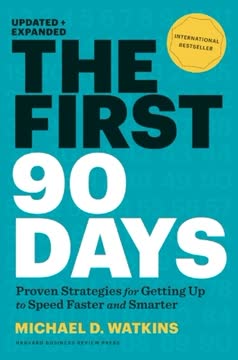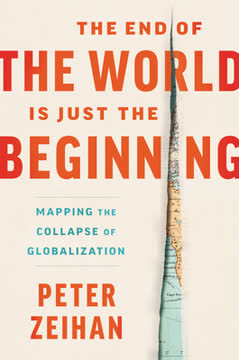Key Takeaways
1. Rumsfeld's Vision: A Smaller, Faster Military
Wars must vary with the nature of their motives and of the situation which gives rise to them.
Transformation ideology. Donald Rumsfeld sought to remake the U.S. military into a leaner, more lethal force, emphasizing speed, precision, and technology over mass and lengthy deployments. This vision, dubbed "transformation," aimed to reduce the need for large land armies and cumbersome "legacy" systems.
Challenging old thinking. Rumsfeld's impatience with traditional military planning was evident when he dismissed CENTCOM's OPLAN 1003-98, which called for as many as 500,000 troops, as "the product of old thinking." He insisted on a smaller force, suggesting that no more than 125,000 troops would be required for the Iraq invasion.
Revolution in Military Affairs (RMA). Rumsfeld was fascinated by the views of Andrew Marshall, who saw advanced military technology as a way to rapidly defeat the foe. This approach, a revolution in military affairs, would reduce the requirement for large land armies.
2. The "Slices" Approach: Targeting Regime Vulnerabilities
The key was to identify the vulnerabilities that could be exploited to heighten Saddam's paranoia and strip away his supporters.
Deconstructing the regime. Rumsfeld's strategy involved identifying key "slices" of the Iraqi regime, including leadership, internal security, WMD sites, the Republican Guard, and infrastructure, and then applying military capabilities to influence or neutralize them. This approach aimed to create momentum for regime change.
Grand strategy matrix. The CENTCOM planners created a matrix, which Franks dubbed his grand strategy. The slices were listed on a horizontal axis and included leadership, internal security, Iraq's presumed WMD sites, Saddam's Republican Guard, his Regular Army, territory, infrastructure, civilian society, and the commercial sector.
Surprise, speed, and shock. Rumsfeld's talking points stressed the need for surprise, speed, shock, and risk, as well as actions that would add to the momentum for regime change. He advocated starting military action before all forces were in place and emphasized the importance of decapitating the Iraqi government early.
3. The Perils of Limited Postwar Planning
There were indications from the first days of the invasion of the insurgency and guerrilla tactics to come, but they were ignored at the highest levels in Washington and at the Central Command.
Neglecting the aftermath. While the American-led campaign was successful in toppling Saddam Hussein's regime, it failed to adequately plan for the postwar phase, including security, political administration, and reconstruction. This lack of planning created a power vacuum and set the conditions for the insurgency that followed.
Zinni's concerns. General Anthony Zinni, the CENTCOM commander before Franks, had recognized the potential for chaos in a post-Saddam Iraq and developed OPLAN 1003-98, which called for a large ground force to maintain order and prevent the country from fragmenting along ethnic lines. However, the civilian complement to the plan was never completed.
Lost opportunities. The bitter insurgency American and British forces confront today was not preordained. There were lost opportunities, military and political, along the way. The commanders and troops who fought the war explained them to us.
4. Saddam's Strategic Miscalculations
The Iraqi leader did not take responsibility for 9/11. While some State Department officials saw it as bluster, Wolfowitz saw Saddam's words as a threat.
Internal vs. external threats. Saddam Hussein's top priority was protecting his regime against potential coups and internal threats, such as a Shiite rebellion. Fighting a ground war with the Americans was a distant third.
Deterrence by doubt. Saddam never dispelled the mystery of whether he might have a hidden cache of WMD. His political strategy was to keep Tehran in check by maintaining some measure of ambiguity over Iraq's WMD.
Misreading American resolve. Saddam believed the Americans had no stomach for a bloody war. He saw the U.S. withdrawal from Somalia after suffering casualties as evidence of American aversion to casualties.
5. The Hybrid Plan: A Risky Compromise
The Iraq War is a story of hubris and heroism, of high-technology wizardry and cultural ignorance.
Balancing act. The Hybrid Plan, also known as the 5-11-16-125 Plan, was an attempt to balance Rumsfeld's desire for a smaller, faster deployment with the military's need for sufficient forces to defeat Iraq and secure the peace. It called for an initial invasion force of 145,000 troops deployed over 90 days, followed by reinforcements.
Compromises and risks. The Hybrid Plan involved a near-simultaneous ground and air attack, taking advantage of what the Iraqis had come to expect from the Americans. However, it also entailed attacking before all forces were in place, which could prolong the war.
Feith spies. To assist the command in its work, the planning staff in the CENTCOM parking lot was expanded to include two officials from Doug Feith's office. Some CENTCOM officials had a less flattering description: "Feith spies."
6. The Importance of Allied Support and Regional Politics
The question was where and when to strike.
Coalition building. The Bush administration sought to assemble a "coalition of the willing" to support the invasion of Iraq. However, securing basing rights and cooperation from key allies, such as Saudi Arabia, Jordan, and Turkey, proved challenging.
Cheney's diplomatic mission. Vice President Dick Cheney embarked on a whirlwind tour of the Middle East to secure support for the war. While some Gulf States, like Qatar and Bahrain, were cooperative, others, like Saudi Arabia and Jordan, were more hesitant.
Turkish dilemma. Turkey, a NATO member, was a key player in the region, but its public was overwhelmingly against another war with Iraq. The Turks also feared that a war would lead to the establishment of an independent Kurdish state.
7. The Human Cost of "Shock and Awe"
The Iraq War is a story of hubris and heroism, of high-technology wizardry and cultural ignorance.
Civilian casualties. The American-led campaign was marked by the use of precision weapons and high-technology systems, but it also resulted in civilian casualties and cultural ignorance. The "shock and awe" strategy, while intended to paralyze the enemy, also had a devastating impact on the Iraqi population.
Rules of engagement. The rules of engagement were very tight. We went into this fight assuming we weren't going to fire anything. Now we're receiving incoming artillery. We'd always been told that we'd never be second-guessed.
The fog of war. The fog of war, the chaos and uncertainty of the battlefield, often led to friendly fire incidents and unintended consequences. The downing of a British Tornado by a Patriot missile and the attack on the Al-Rasheed Hotel were examples of the human cost of high-technology warfare.
8. The Unforeseen Insurgency: A Failure to Adapt
The bitter insurgency American and British forces confront today was not preordained.
Ignoring the signs. There were indications from the first days of the invasion of the insurgency and guerrilla tactics to come, but they were ignored at the highest levels in Washington and at the Central Command.
The Fedayeen factor. The Fedayeen, a paramilitary force loyal to Saddam Hussein, played a key role in the insurgency. They were well-organized, well-equipped, and determined to resist the American occupation.
A strategic blunder. Newbold, from his perch as the senior Joint Staff operations officer, later told some of his fellow officers that he considered the focus on Iraq to be a strategic blunder and a distraction from the real war on terror.
9. The Clash of Visions: Military vs. Civilian Control
The topic today is an adversary that poses a threat, a serious threat, to the security of the United States of America.
Rumsfeld's authority. Rumsfeld exercised control with the iron determination of a former corporate executive. He had a restless mind and was given to boast that he was genetically impatient.
Civilian oversight. It was a commonplace among the Bush team that the military needed stronger civilian oversight, and Rumsfeld exercised control with the iron determination of a former corporate executive.
Shelton's resistance. Shelton, for his part, felt that Rumsfeld was not so much a visionary as parochial. Rumsfeld, the JCS chief told associates, had been a Navy fighter pilot, seemed partial to the Navy and the Marines, and was biased against the Army because it had mechanized forces and had taken on Balkan peacekeeping missions that the Bush administration considered to be a distraction.
10. The Lost Opportunity: A Missed Window for Stability
A journey through the war's hidden history demonstrates why American and allied forces are still at risk in a war the president declared all but won on May 1, 2003.
A manageable nuisance. The Clinton administration left office believing that Saddam was a manageable nuisance. Most of the new Bush team read the situation differently.
Focus on Al Qaeda. Attacking Iraq out of the blue and apparently without clear provocation, Shelton argued, would upset the Middle East and hamper the coalition-building effort. Nor, he added, was there any reason to think that Iraq was linked to the September 11 attacks.
Focus on Al Qaeda. The president decided to keep the focus on Al Qaeda and eliminating its sanctuary in Afghanistan, reaffirming the counsel of the vast majority of his advisers. But Bush had signaled that Iraq was still on his mind.
Last updated:
Review Summary
Cobra II is praised as a comprehensive account of the 2003 Iraq invasion and its aftermath. Readers appreciate the detailed military analysis and insider perspective on planning and execution. The book is critical of the Bush administration, especially Rumsfeld, for inadequate post-war planning. While some find it dense, most consider it essential reading for understanding the war's complexities. Reviewers note the authors' balanced approach and thorough research, though some feel the occupation coverage is limited compared to the invasion narrative.
Similar Books






Download PDF
Download EPUB
.epub digital book format is ideal for reading ebooks on phones, tablets, and e-readers.




